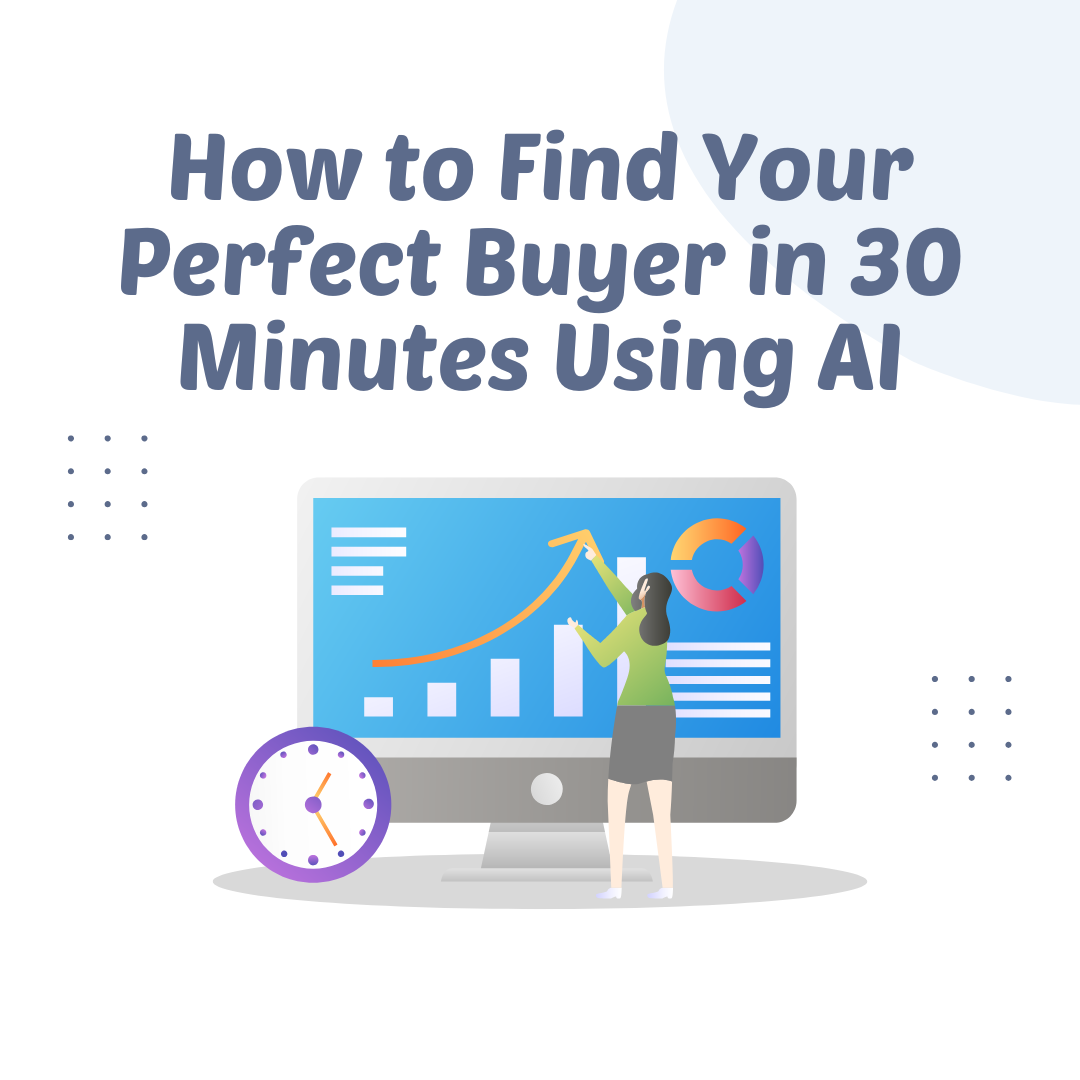Most entrepreneurs fail for one simple reason:
They try to build for everyone.
When you target everyone, you dilute your message, confuse your positioning, and end up serving no one. The fastest way to build something people actually pay for is to get ultra-specific about who your buyer is, and the good news is, you no longer need weeks of guesswork to figure this out.
With the right AI tools and a structured process, you can identify your ideal buyer in under 30 minutes. Below, I’ll share a 7-step AI Buyer Discovery Framework that blends artificial intelligence with real-world customer data to help you validate and refine your audience quickly.
Step 1: Map the Problems
The foundation of any business is solving a problem that matters. AI can help you map those problems in minutes.
Prompt example for ChatGPT:
“I want to help [broad market]. List 15 specific problems they face that cost them $500+ per month to ignore. For each problem, estimate the financial impact and urgency level.”
Example: “I want to help small business owners.”
Within seconds, AI will return a list of high-value, high-cost problems. Focus on those that are both expensive to ignore and urgent—these are the opportunities worth pursuing.

Step 2: Collect Real Customer Language
AI is powerful, but nothing beats hearing problems in the customer’s own words. Go to platforms like Reddit, Quora, or industry-specific forums and search for discussions around the top problems you identified.
- Choose active subreddits like r/entrepreneur, r/smallbusiness, or r/marketing.
- Search for posts from the last 30 days.
- Copy 5–10 quotes where people vent their frustrations.
This step ensures you’re not relying on assumptions—you’re building on raw customer sentiment.


Step 3: Build the Buyer Avatar
Now, feed those real quotes back into ChatGPT to create your detailed buyer persona.
Prompt example:
“Based on these Reddit quotes [paste quotes], create a detailed buyer persona. Include their job title, income level, daily struggles, failed solutions, and where they seek help online.”
To deepen your insights, ask AI to create multiple persona variations—budget buyer, mid-tier, and premium. This gives you a sense of how different market segments might approach the same problem.

Step 4: Validate the Market
Before you dive in, confirm that people are already spending money on solutions. Use Perplexity AI or ChatGPT with web browsing enabled.
Prompt example:
“Find 3 companies already serving [your avatar] with solutions for [specific problem]. What do they charge? What do customer reviews complain about?”
This research answers two critical questions:
- Is there an existing market? (If no one’s paying, there’s likely no business.)
- Where are the gaps? (Customer complaints point to opportunities for differentiation.)

Step 5: Find Real Prospects
Now that you know your buyer exists, it’s time to see if you can actually find them.
Ask ChatGPT or Perplexity:
“Write 3 LinkedIn Sales Navigator search strings to find people who match this avatar. Include specific job titles, company sizes, and industry keywords.”
Test these searches. If you find too few results, you’ve niched down too far. If you get tens of thousands, you may need to narrow your focus.


Step 6: Test Through Conversations
Research is useful, but conversations are gold. Reach out to 10 prospects you identified—on LinkedIn, Reddit, or through your network.
Keep it simple:
“Hey [Name], I’m doing research on [problem]. Curious, what’s been your biggest struggle with [X] recently?”
The key here is listening, not pitching. If three or more people confirm the same pain point, you’ve validated your buyer’s core problem.
Step 7: Sketch an Offer
Once you know the pain point is real, it’s time to test solutions.
Prompt example for ChatGPT:
“Based on this avatar and confirmed problem, draft 3 potential solution offers. Include the problem solved, core promise, price point, and delivery model (service, SaaS, course, etc.).”
Then, circle back to your early conversations. Share these offers and gauge reactions. If one sparks real interest, you’ve got the seed of your product or service.
Pro Guidelines for Success
To get the most out of this framework, keep these principles in mind:
- Niche down twice. Start broad (“small business owners”), then get specific (“local gym owners under $1M revenue”).
- Check the wallet size. Passion is great, but if your buyer can’t afford to pay, it’s not a viable business.
- Build audience before product. Share insights from your research publicly to attract early adopters and build credibility.

